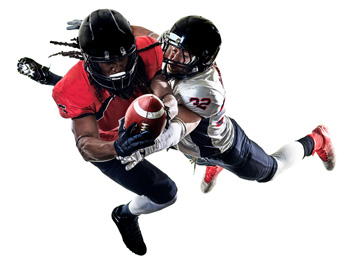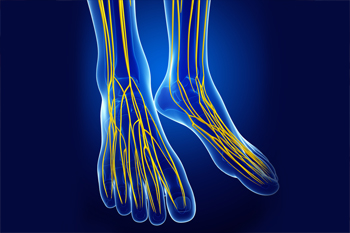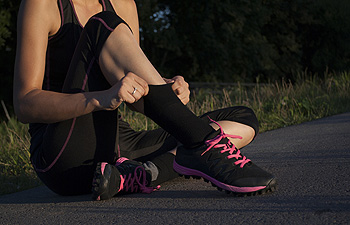Lansing (517) 321-1199

 Rookie quarterback Dwayne Haskins, who plays for the Washington Redskins, had to exit the field as a result of an ankle injury in the December 22, 2019 game against the New York Giants. He was sacked by Lorenzo Carter, who is a linebacker for the Giants. Haskins was unable to play in the second half of the game. The game was lost to the Giants in overtime with a score of 41-35. He would like to play in the last game of the season against the Dallas Cowboys to end his rookie year.
Rookie quarterback Dwayne Haskins, who plays for the Washington Redskins, had to exit the field as a result of an ankle injury in the December 22, 2019 game against the New York Giants. He was sacked by Lorenzo Carter, who is a linebacker for the Giants. Haskins was unable to play in the second half of the game. The game was lost to the Giants in overtime with a score of 41-35. He would like to play in the last game of the season against the Dallas Cowboys to end his rookie year.
Ankle and foot injuries are common among athletes and in many sports. They can be caused by several problems and may be potentially serious. If you are feeling pain or think you were injured in a sporting event or when exercising, consult with Dr. Harold Sterling from Michigan. Our doctor will assess your condition and provide you with quality foot and ankle treatment.
Common Injuries
The most common injuries that occur in sporting activities include:
Symptoms
Symptoms vary depending upon the injury and in some cases, there may be no symptoms at all. However, in most cases, some form of symptom is experienced. Pain, aching, burning, bruising, tenderness, tightness or stiffness, sensation loss, difficulty moving, and swelling are the most common symptoms.
Treatment
Just as symptoms vary depending upon the injury, so do treatment options. A common treatment method is known as the RICE method. This method involves rest, applying ice, compression and elevating the afflicted foot or ankle. If the injury appears to be more serious, surgery might be required, such as arthroscopic or reconstructive surgery. Lastly, rehabilitation or therapy might be needed to gain full functionality in the afflicted area. Any discomfort experienced by an athlete must be evaluated by a licensed, reputable medical professional.
If you have any questions, please feel free to contact our office located in Lansing, MI. We offer the newest diagnostic and treatment technologies for all your foot care needs.
Read more about Sports Related Foot and Ankle Injuries Many women are aware of the numerous aches and pains the body may experience throughout pregnancy. A common area for pain to occur is in the feet. This may be caused by the additional weight that builds during pregnancy, which may affect the arch, causing it to either disappear in the feet, or become extremely low. The feet may roll inward as a result of flat feet, and this may cause significant pain. Relief may be found when appropriate shoes are worn, and it may help to wear custom orthotics. Another common ailment that many pregnant women experience is swollen feet. This happens as a result of increased fluids and blood volume. To lessen the swelling, it may help to avoid foods that have elevated levels of salt, elevate the legs as often as possible, and wear shoes that fit correctly. If you have any questions about how pregnancy can affect the feet, it is suggested that you consult with a podiatrist.
Many women are aware of the numerous aches and pains the body may experience throughout pregnancy. A common area for pain to occur is in the feet. This may be caused by the additional weight that builds during pregnancy, which may affect the arch, causing it to either disappear in the feet, or become extremely low. The feet may roll inward as a result of flat feet, and this may cause significant pain. Relief may be found when appropriate shoes are worn, and it may help to wear custom orthotics. Another common ailment that many pregnant women experience is swollen feet. This happens as a result of increased fluids and blood volume. To lessen the swelling, it may help to avoid foods that have elevated levels of salt, elevate the legs as often as possible, and wear shoes that fit correctly. If you have any questions about how pregnancy can affect the feet, it is suggested that you consult with a podiatrist.
Pregnant women with swollen feet can be treated with a variety of different methods that are readily available. For more information about other cures for swollen feet during pregnancy, consult with Dr. Harold Sterling from Michigan. Our doctor will attend to all of your foot and ankle needs.
What Foot Problems Can Arise During Pregnancy?
One problem that can occur is overpronation, which occurs when the arch of the foot flattens and tends to roll inward. This can cause pain and discomfort in your heels while you’re walking or even just standing up, trying to support your baby.
Another problem is edema, or swelling in the extremities. This often affects the feet during pregnancy but tends to occur in the later stages.
How Can I Keep My Feet Healthy During Pregnancy?
If you have any questions please feel free to contact our office located in Lansing, MI. We offer the newest diagnostic and treatment technologies for all your foot and ankle needs.
Read more about Foot Care for Pregnant Women Poor circulation in the feet occurs when the body is unable to carry sufficient amounts of blood to the area. It typically occurs as a result of blocked arteries and can cause severe pain and discomfort. The symptoms that are associated with poor circulation can include numbness, tingling, foot cramps, and difficulty walking. Some patients experience visible symptoms that may consist of dry skin, swollen feet, and the toes may appear discolored. In addition to blocked arteries, there may be other reasons that may cause poor circulation. These may include smoking, standing or sitting for extended periods of time, and eating unhealthy foods. Relief may be found when the feet are frequently elevated and if a gentle exercise regime is incorporated into your daily routine.
Poor circulation in the feet occurs when the body is unable to carry sufficient amounts of blood to the area. It typically occurs as a result of blocked arteries and can cause severe pain and discomfort. The symptoms that are associated with poor circulation can include numbness, tingling, foot cramps, and difficulty walking. Some patients experience visible symptoms that may consist of dry skin, swollen feet, and the toes may appear discolored. In addition to blocked arteries, there may be other reasons that may cause poor circulation. These may include smoking, standing or sitting for extended periods of time, and eating unhealthy foods. Relief may be found when the feet are frequently elevated and if a gentle exercise regime is incorporated into your daily routine.
Poor circulation is a serious condition and needs immediate medical attention. If you have any concerns with poor circulation in your feet contact Dr. Harold Sterling of Michigan. Our doctor will treat your foot and ankle needs.
Poor Circulation in the Feet
Poor blood circulation in the feet and legs is can be caused by peripheral artery disease (PAD), which is the result of a buildup of plaque in the arteries.
Plaque buildup or atherosclerosis results from excess calcium and cholesterol in the bloodstream. This can restrict the amount of blood which can flow through the arteries. Poor blood circulation in the feet and legs are sometimes caused by inflammation in the blood vessels, known as vasculitis.
Causes
Lack of oxygen and oxygen from poor blood circulation restricts muscle growth and development. It can also cause:
Those who have diabetes or smoke are at greatest risk for poor circulation, as are those who are over 50. If you have poor circulation in the feet and legs it may be caused by PAD and is important to make changes to your lifestyle in order to reduce risk of getting a heart attack or stroke. Exercise and maintaining a healthy lifestyle will dramatically improve conditions.
As always, see a podiatrist as he or she will assist in finding a regimen that suits you. A podiatrist can also prescribe you any needed medication.
If you have any questions please feel free to contact our office located in Lansing, MI. We offer the newest diagnostic and treatment technologies for all your foot and ankle needs.
Read more about Causes Symptoms and Treatment for Poor Circulation in the Feet Research has indicated that running injuries may be prevented when the runner has good form, a strong body, and proper footwear. These three components may help to keep running movements consistent. It may also be useful to implement a warm up before a run. This can consist of running in place with your knees up, followed by leaning forward and running for several yards. The force of impact may be lessened when an effort is made to run quietly. Quietly running may shorten your stride, which can make it easier to land on the midfoot. Please consult with a podiatrist if you would like additional information about specific running techniques that can help to prevent injuries.
Research has indicated that running injuries may be prevented when the runner has good form, a strong body, and proper footwear. These three components may help to keep running movements consistent. It may also be useful to implement a warm up before a run. This can consist of running in place with your knees up, followed by leaning forward and running for several yards. The force of impact may be lessened when an effort is made to run quietly. Quietly running may shorten your stride, which can make it easier to land on the midfoot. Please consult with a podiatrist if you would like additional information about specific running techniques that can help to prevent injuries.
All runners should take extra precaution when trying to avoid injury. If you have any concerns about your feet, contact Dr. Harold Sterling of Michigan. Our doctor will treat your foot and ankle needs.
How to Prevent Running Injuries
There are a lot of mistakes a runner can make prior to a workout that can induce injury. A lot of athletes tend to overstretch before running, instead of saving those workouts for a post-run routine. Deep lunges and hand-to-toe hamstring pulls should be performed after a workout instead of during a warmup. Another common mistake is jumping into an intense routine before your body is physically prepared for it. You should try to ease your way into long-distance running instead of forcing yourself to rush into it.
More Tips for Preventing Injury
If you have any questions, please feel free to contact our office located in Lansing, MI. We offer the newest diagnostic and treatment technologies for all your foot care needs.
Read more about Preventing Running Injuries Research has indicated that cracked heels affect more than fifty percent of the world's population. This condition may be a result of wearing shoes that have an open back, or from standing for long periods of time throughout the day. The skin may lose its elasticity, and can gradually develop deep cracks, which are also known as fissures. It may be beneficial to stretch the Achilles tendon before the day begins. This may help to ease the amount of weight the heels absorb as walking occurs. Patients may find relief when their feet are washed and thoroughly dried, followed by applying a good moisturizer. Additionally, cracked heels may be prevented when shoes are worn that offer adequate support for the heels. If you have any questions about effective remedies for this condition, it is suggested that you seek the counsel of a podiatrist.
Research has indicated that cracked heels affect more than fifty percent of the world's population. This condition may be a result of wearing shoes that have an open back, or from standing for long periods of time throughout the day. The skin may lose its elasticity, and can gradually develop deep cracks, which are also known as fissures. It may be beneficial to stretch the Achilles tendon before the day begins. This may help to ease the amount of weight the heels absorb as walking occurs. Patients may find relief when their feet are washed and thoroughly dried, followed by applying a good moisturizer. Additionally, cracked heels may be prevented when shoes are worn that offer adequate support for the heels. If you have any questions about effective remedies for this condition, it is suggested that you seek the counsel of a podiatrist.
Cracked heels are unsightly and can cause further damage to your shoes and feet. If you have any concerns, contact Dr. Harold Sterling from Michigan. Our doctor can provide the care you need to keep you pain-free and on your feet.
Cracked Heels
Cracked heels appear unappealing and can make it harder for you walk around in sandals. Aside from looking unpleasant, cracked heels can also tear stockings, socks, and wear out your shoes. There are several methods to help restore a cracked heel and prevent further damage.
How Do You Get Them?
Dry skin is the number one culprit in creating cracked heels. Many athletes, walkers, joggers, and even swimmers suffer from cracked heels. Age and skin oil production play a role to getting cracked heels as well.
Promote Healing
Over the counter medicines can help, especially for those that need instant relief or who suffer from chronic dry feet.
Wear Socks – Wearing socks with medicated creams helps lock in moisture.
Moisturizers – Applying both day and night will help alleviate dryness which causes cracking.
Pumice Stones – These exfoliate and remove dead skin, which allows for smoother moisturizer application and better absorption into the skin.
Change in Diet
Eating healthy with a well-balanced diet will give the skin a fresh and radiant look. Your body responds to the kinds of food you ingest. Omega-3 fatty acids and zinc supplements can also revitalize skin tissue.
Most importantly, seek professional help if unsure how to proceed in treating cracked heels. A podiatrist will help you with any questions or information needed.
If you have any questions, please feel free to contact our office located in Lansing, MI. We offer the newest diagnostic and treatment technologies for all your foot care needs.
Read more about Solutions for Cracked Heels